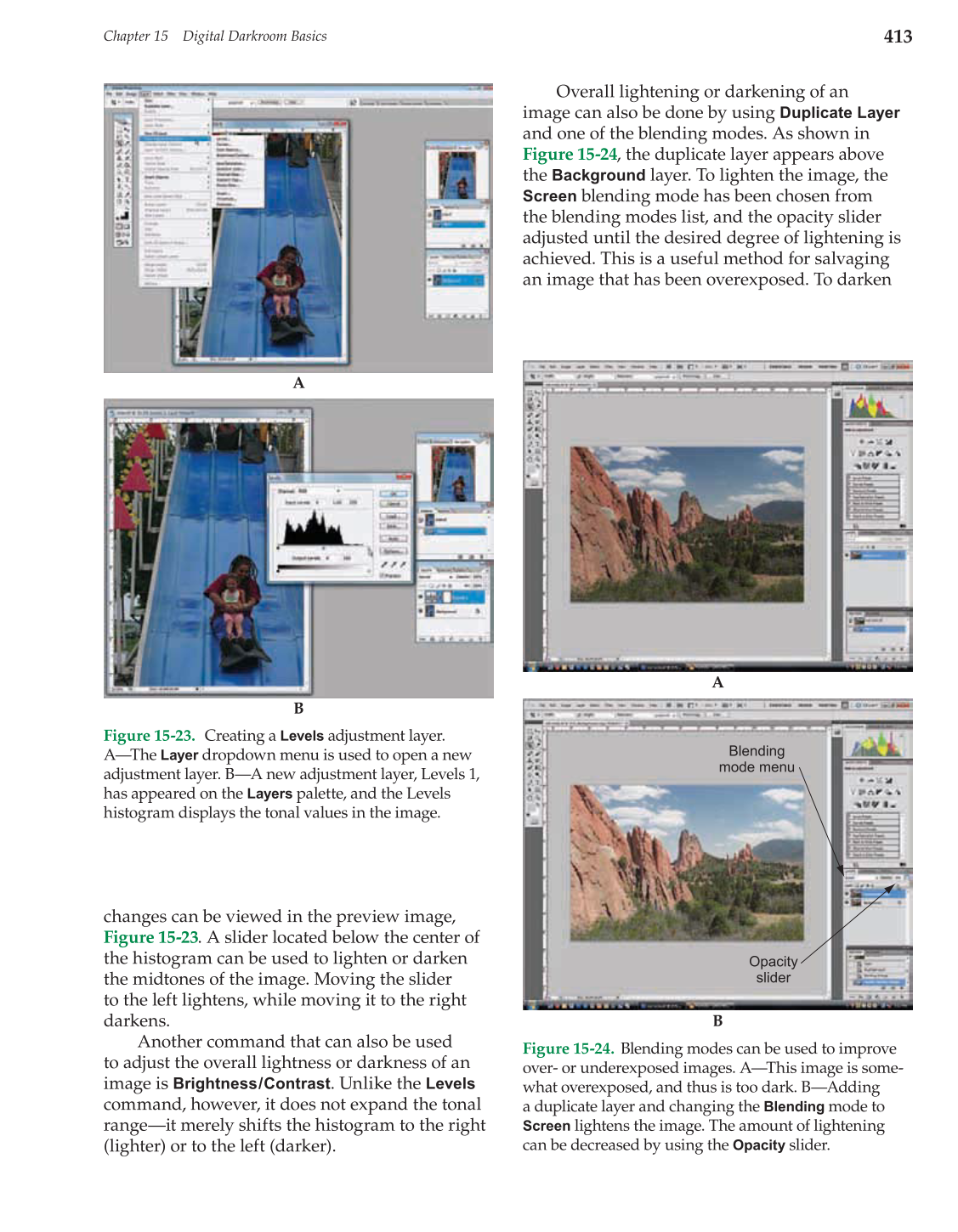413
Chapter 15 Digital Darkroom Basics
changes can be viewed in the preview image,
Figure 15-23. A slider located below the center of
the histogram can be used to lighten or darken
the midtones of the image. Moving the slider
to the left lightens, while moving it to the right
darkens.
Another command that can also be used
to adjust the overall lightness or darkness of an
image is Brightness/Contrast. Unlike the
Levels
command, however, it does not expand the tonal
range—it merely shifts the histogram to the right
(lighter) or to the left (darker).
Overall lightening or darkening of an
image can also be done by using
Duplicate Layer
and one of the blending modes. As shown in
Figure 15-24, the duplicate layer appears above
the
Background
layer. To lighten the image, the
Screen
blending mode has been chosen from
the blending modes list, and the opacity slider
adjusted until the desired degree of lightening is
achieved. This is a useful method for salvaging
an image that has been overexposed. To darken
Figure 15-23. Creating a
Levels
adjustment layer.
A—The
Layer
dropdown menu is used to open a new
adjustment layer. B—A new adjustment layer, Levels 1,
has appeared on the
Layers
palette, and the Levels
histogram displays the tonal values in the image.
Figure 15-24. Blending modes can be used to improve
over- or underexposed images. A—This image is some-
what overexposed, and thus is too dark. B—Adding
a duplicate layer and changing the
Blending
mode to
Screen
lightens the image. The amount of lightening
can be decreased by using the
Opacity
slider.
Opacity
slider
Blending
mode menu
A
A
B
B
